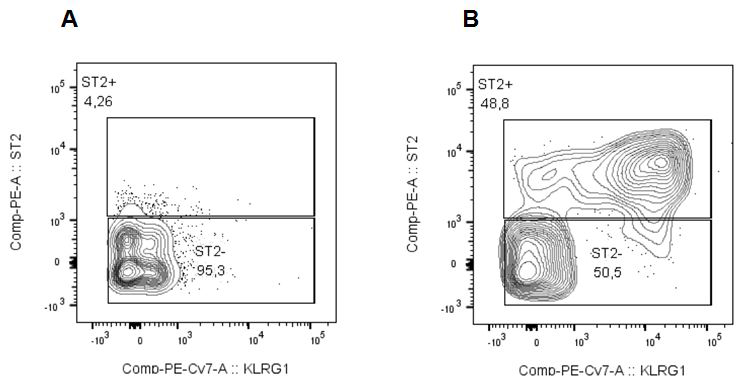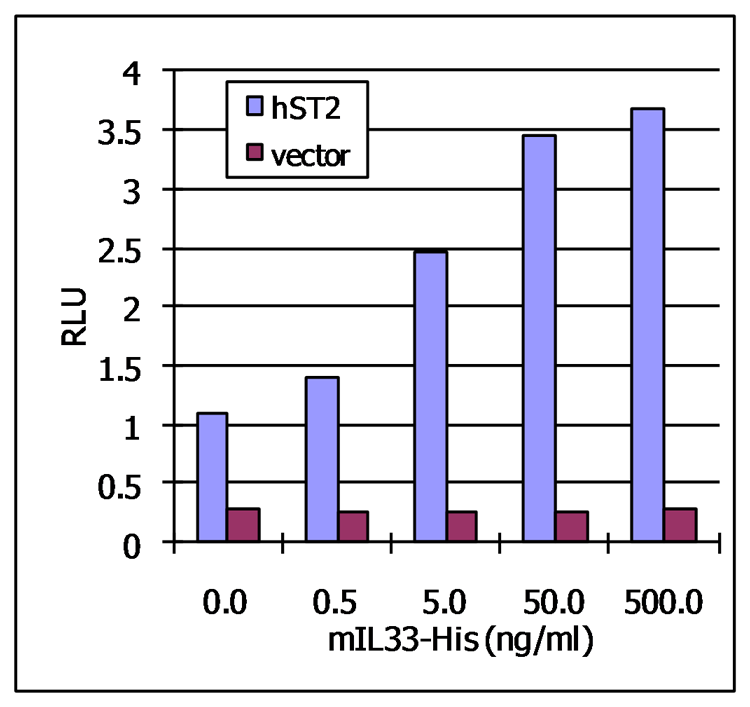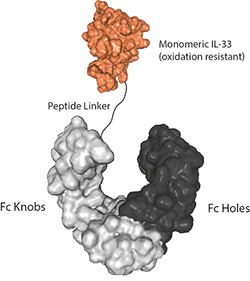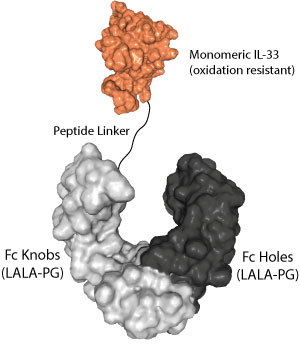
Activation in vivo of Innate Lymphoid Cells 2 (ILC2) by IL-33 (oxidation resistant) (human) (rec.) (untagged) (AG-40B-0160). Method: C57BL/6 mice were injected daily for 3 days with PBS (Figure A) or IL-33 (oxidation resistant) (human) (rec.
IL-33 (oxidation resistant) (human) (rec.) (untagged)
AG-40B-0160
Protein IDQ2YEJ5
Product group Proteins / Signaling Molecules
Overview
- SupplierAdipoGen Life Sciences
- Product NameIL-33 (oxidation resistant) (human) (rec.) (untagged)
- Delivery Days Customer10
- CertificationResearch Use Only
- Estimated Purity>95%
- Protein IDQ2YEJ5
- Protein NameInterleukin-33
- Scientific DescriptionInterleukin-33 (IL-33; HF-NEV; IL-1F11), a member of the IL-1 family of cytokines, is expressed by many cell types following pro-inflammatory stimulation and is thought to be released upon cell lysis. IL-33 binds to and signals through ST2 (IL-1R1) and its stimulation recruits MYD88, IRAK, IRAK4 and TRAF6, followed by phosphorylation of ERK1 (MAPK3) / ERK2 (MAPK1), p38 (MAPK14) and JNK. The ability of IL-33 to target numerous immune cell types, like Th2-like cells, mast cells and B1 cells, and to induce cytokine and chemokine production underlines its potential in influencing the outcome of a wide range of diseases, such as arthritis, asthma, atopic allergy & anaphylaxis, cardiovascular disease/atherosclerosis, nervous system diseases and sepsis. IL-33 facilitates Treg expansion in vitro and in vivo. Recently, IL-33 has been involved in adipocyte differentiation. The biological activity of IL-33 at its receptor ST2 is rapidly terminated in the extracellular environment by its oxidation (formation of two disulfide bridges), resulting in an extensive conformational change that disrupts the ST2 binding site. Mutations at amino acids C208S/C232S protect IL-33 from oxidation and increase its activity. - Protein. Human IL-33 (aa 112-270) is untagged. Amino acids C208 and C232 have been mutated to serine to protect IL-33 from oxidation. Source: E. coli. Endotoxin content: 95% (SDS-PAGE). Interleukin-33 (IL-33; HF-NEV; IL-1F11), a member of the IL-1 family of cytokines, is expressed by many cell types following pro-inflammatory stimulation and is thought to be released upon cell lysis. IL-33 binds to and signals through ST2 (IL-1R1) and its stimulation recruits MYD88, IRAK, IRAK4 and TRAF6, followed by phosphorylation of ERK1 (MAPK3) / ERK2 (MAPK1), p38 (MAPK14) and JNK. The ability of IL-33 to target numerous immune cell types, like Th2-like cells, mast cells and B1 cells, and to induce cytokine and chemokine production underlines its potential in influencing the outcome of a wide range of diseases, such as arthritis, asthma, atopic allergy & anaphylaxis, cardiovascular disease/atherosclerosis, nervous system diseases and sepsis. IL-33 facilitates Treg expansion in vitro and in vivo. Recently, IL-33 has been involved in adipocyte differentiation. The biological activity of IL-33 at its receptor ST2 is rapidly terminated in the extracellular environment by its oxidation (formation of two disulfide bridges), resulting in an extensive conformational change that disrupts the ST2 binding site. Mutations at amino acids C208S/C232S protect IL-33 from oxidation and increase its activity.
- Storage Instruction-20°C,2°C to 8°C
- UNSPSC12352202




